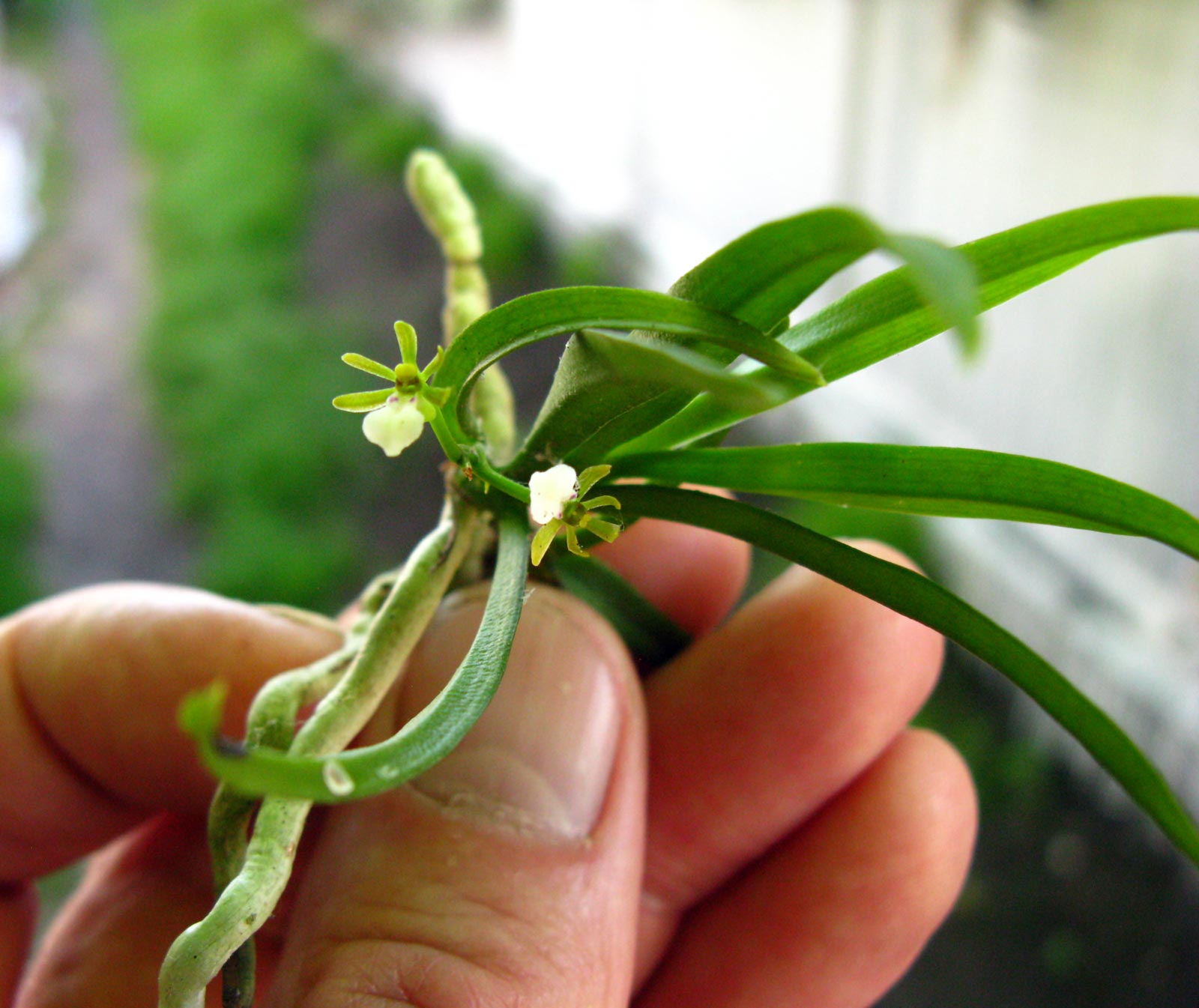Trichoglottis Triflora
Trichoglottis triflora may look like a simple orchid at first glance, but it is far more complex and interesting than you might imagine. With its unique shape and beautiful flowers, it's no wonder that trichoglottis triflora has captured the attention of orchid enthusiasts around the world.
Pain Points of Growing Trichoglottis Triflora
While trichoglottis triflora is a stunning orchid, it can be challenging to grow. One of the biggest challenges is providing the right amount of light. Too little light can cause the orchid to become leggy and weak, while too much light can burn the leaves and flowers. Additionally, trichoglottis triflora requires consistent humidity and temperature, which can be difficult to maintain in some climates. Finally, this orchid is prone to diseases and pests, so it's important to monitor it carefully and address any issues as soon as they arise.
What is Trichoglottis Triflora?
Trichoglottis triflora is a species of orchid that is native to the Philippines. It is a epiphyte, which means it grows on the bark of trees rather than in soil. The orchid produces long, slender leaves and its flowers are white or cream-colored with a waxy texture. The blooms are small, measuring only about 1 cm across, but they are the defining feature of this orchid.
Main Points to Consider When Growing Trichoglottis Triflora
To successfully grow trichoglottis triflora, it's important to provide the right conditions. This includes bright, indirect light and consistent temperature and humidity. The orchid also benefits from regular fertilization and proper pruning. As with any plant, it's important to monitor the orchid for signs of disease or pests and take action immediately if a problem arises. By following these tips, you can enjoy the beauty of trichoglottis triflora in your own home or garden.
My Personal Experience with Trichoglottis Triflora
As an orchid enthusiast, I've had the pleasure of growing trichoglottis triflora for many years. While it can be challenging at times, the beauty of the flowers and the unique growth habit of this orchid make it all worthwhile. I find that providing bright, indirect light and consistent moisture levels gives my trichoglottis triflora the best chance to thrive, and regular pruning helps to keep the plant healthy and strong.
Tips for Growing Trichoglottis Triflora
If you're interested in growing trichoglottis triflora, there are a few key tips to keep in mind. First, make sure you provide bright, indirect light and keep the temperature and humidity levels consistent. Additionally, use well-draining potting mix and fertilize regularly. Finally, be diligent about monitoring the plant for signs of problems and take action immediately if you notice anything unusual.
Understanding the Unique Shape of Trichoglottis Triflora
One of the most interesting features of trichoglottis triflora is its unique shape. The orchid produces long, slender leaves that can grow up to several feet in length. The flowers, which are small and white, bloom on long, thin spikes that emerge from the base of the leaves. This growth pattern allows trichoglottis triflora to bloom continuously throughout the year, making it a popular choice for orchid enthusiasts.
Caring for Trichoglottis Triflora
To care for trichoglottis triflora, it's important to provide the right growing conditions. This includes bright, indirect light, consistent temperature and humidity, and regular fertilization. Additionally, it's important to monitor the plant for diseases and pests and take action immediately if any issues arise. With proper care, trichoglottis triflora can thrive and add beauty to any home or garden.
Question and Answer
Q: How often should I water my trichoglottis triflora?
A: It's important to keep the potting mix moist but not overly wet. Water the orchid deeply once a week, or more frequently if the potting mix dries out quickly.
Q: Do I need to fertilize my trichoglottis triflora?
A: Yes, regular fertilization is important for this orchid. Use a balanced fertilizer every two weeks during the growing season to provide essential nutrients.
Q: How can I tell if my trichoglottis triflora is getting too much or too little light?
A: If the leaves appear leggy and thin, it's a sign that the orchid is not getting enough light. If the leaves appear burned or bleached, it's a sign that the orchid is getting too much light.
Q: What pests are common on trichoglottis triflora?
A: Common pests include scale, spider mites, and mealybugs. Watch for signs of infestation, such as sticky or discolored leaves, and take action immediately to prevent spread.
Conclusion of Trichoglottis Triflora
Trichoglottis triflora is a fascinating orchid with a unique growth pattern and beautiful flowers. While it can be challenging to grow, the rewards are well worth the effort. By providing the right growing conditions and monitoring the plant carefully, you can enjoy the beauty of trichoglottis triflora in your own home or garden.
Gallery
Trichoglottis Triflora - Orquidário Emanuel

Photo Credit by: bing.com /
Trichoglottis Triflora - Orchidées De Großräschen

Photo Credit by: bing.com /
150 Best Images About Trichoglottis/Spanthoglottis/Trichoceros

Photo Credit by: bing.com / trichoglottis triflora
Trichoglottis Triflora (Guillaumin) Garay & Seidenfaden
Photo Credit by: bing.com / triflora trichoglottis march
IOSPE PHOTOS
Photo Credit by: bing.com / trichoglottis triflora garay 1972 guillaumin